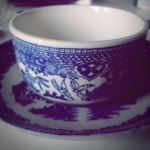It’s no secret that today people dress a lot more casually than they did decades ago. This goes double for jobs that are not considered prestigious. Today, as was the case in the old days, fast food jobs nearly always require that the employee wears a uniform. Today it’s often a pair of slacks, a polo shirt, and a visor or hat. But, flash back to the 1930s and the whole get up becomes a lot more formal. The uniform guide for female employees of White Castle shows just how different their uniforms and standard of appearance are from today’s food workers.
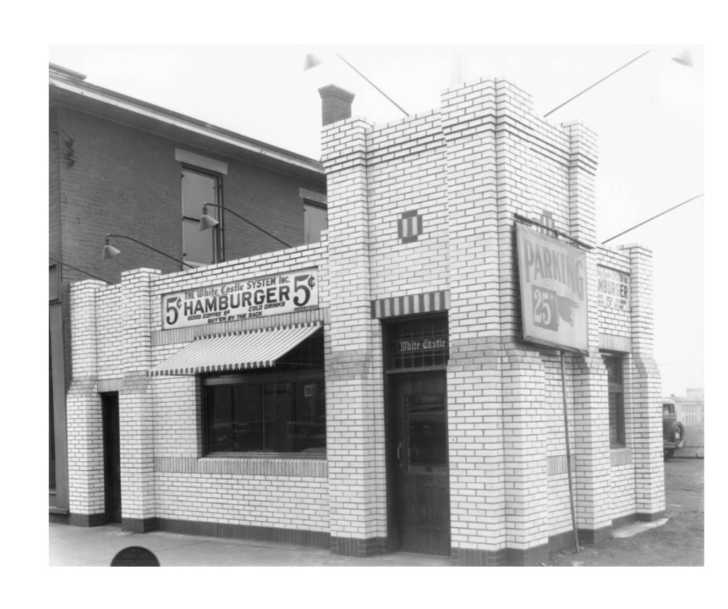
In 1921 in Wichita, Kansas, Billy Ingram and Walter Anderson opened the first White Castle burger stand. The pair of fast food purveyors were confident that burgers were the future of American restaurants. Their first locations were quite small and had a castle look to the buildings. But, the white exterior was meant to project the idea of cleanliness.
Coming from Upton Sinclair’s expose on the meat packing industry, The Jungle, in 1906, and the subsequent food scares of the 1910s, folks in the 1920s and 1930s were interested in sanitary kitchens and food packaging that was safe. The interior of White Castle restaurants also reflected the sanitary “pure food” movement, with tile and steel surfaces that were to be kept spotless at all times. This was to inspire confidence in the customers who chose to eat there.
And, it worked because White Castle not only popularized the concept of the fast food chain, but it’s still going strong today. The brand is a cult favorite and you either love it or you don’t. By the time the Great Depression hit, White Castle was already a growing chain with a good reputation. And the hamburger was seen as a cheap and filling lunch or dinner.
To make sure their customers felt at ease, the uniform requirements for White Castle workers were quite stringent, in keeping with the theme of cleanliness. In all there were 33 points of note for female employees in the 1930s-1940s. For the front view there were 24 rules, as seen below.
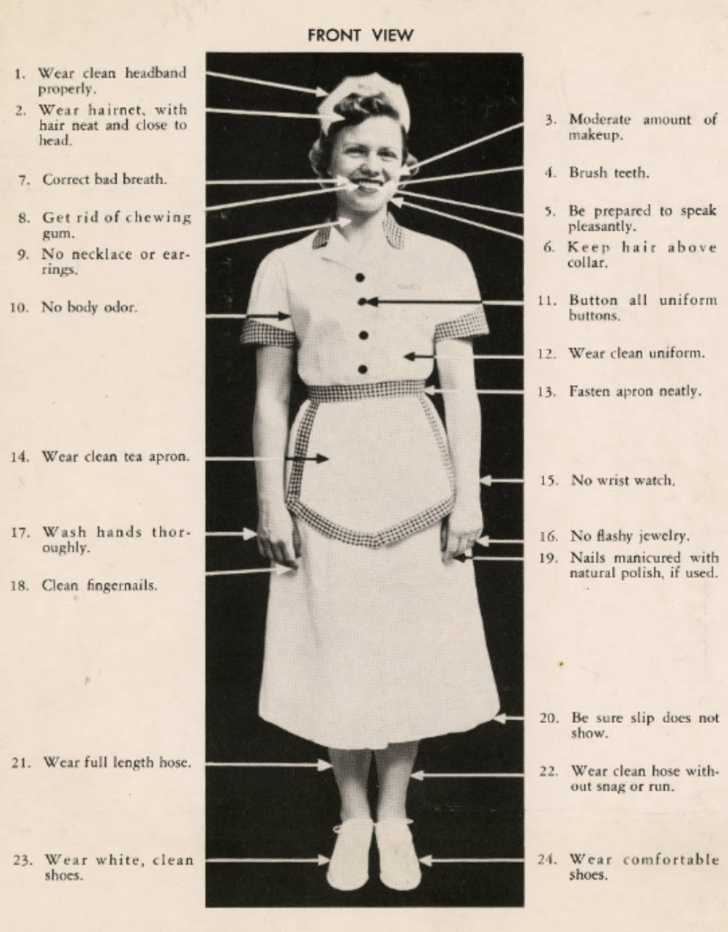
- 1. Wear clean headband properly.
- 2. Wear hairnet, with hair neat and close to the head.
- 3. Moderate amount of makeup.
- 4. Brush teeth.
- 5. Be prepared to speak pleasantly.
- 6. Keep hair above the collar.
- 7. Correct bad breath.
- 8. Get rid of chewing gum.
- 9. No necklace or earrings.
- 10. No body odor.
- 11. Button all uniform buttons.
- 12. Wear clean uniform.
- 13. Fasten apron neatly.
- 14. Wear clean tea apron.
- 15. No wrist watch.
- 16. No flashy jewelry.
- 17. Wash hands thoroughly.
- 18. Clean fingernails.
- 19. Nails manicured with natural polish, if used.
- 20. Be sure slip does not show.
- 21. Wear full length hose.
- 22. Wear clean hose without snag or run.
- 23. Wear white, clean shoes.
- 24. Wear comfortable shoes.
Some of these requirements are rather similar to what was expected of nurses around the same time, which only adds to the clean and respectable feeling of the uniform. It was clear that the White Castle chain wanted no doubts about the quality and safety of their food.
For the back view, an equal measure of care must be given, though many of the points are repeats of the first set of rules.
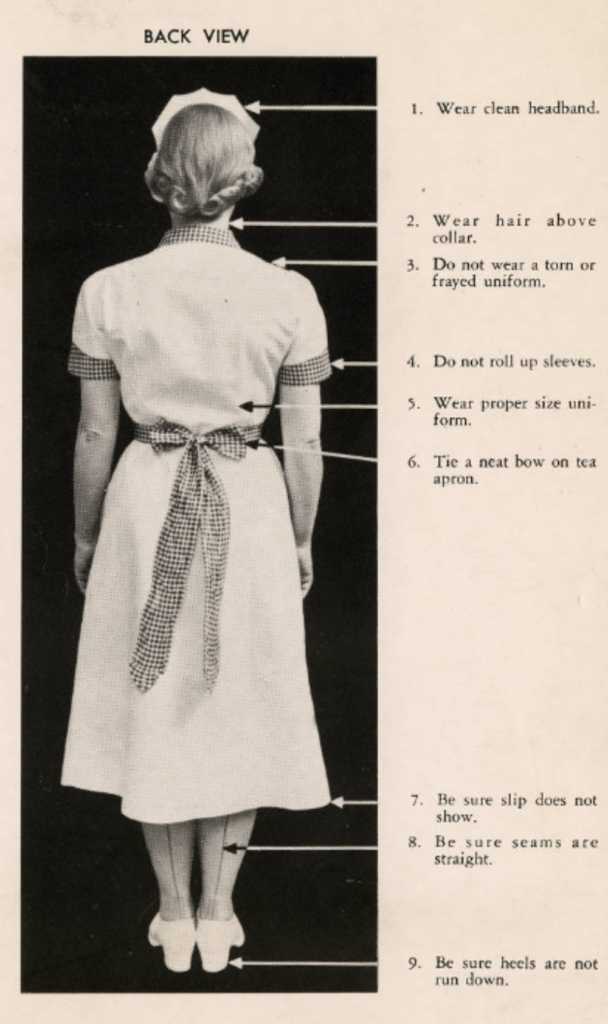
- 1. Wear clean headband.
- 2. Do hair above collar.
- 3. Do not wear a torn of frayed uniform.
- 4. Do not roll up sleeves.
- 5. Wear proper size uniform.
- 6. Tie a neat bow on tea apron.
- 7. Be sure slip does not show.
- 8. Be sure [stocking] seams are straight.
- 9. Be sure heels are not run down.
No part of the uniform was to be out of sorts, something which was much harder to do back then considering that the female employees had to set their hair, keep their stockings in order, wear an apron and hat, and generally make sure their attire was well-kept and spotless.
Fast forward to the 1960s-1970s and female employees were given slacks to wear, although the rules about their appearance were still many. Most of the important ones, like not having bad breath or wearing flashy jewelry, and keeping hair above the collar still applied. However, the apron and dress were gone, replaced by blouse and slacks. Also, there are no heels shown in the picture.

For male employees of the 1950s, there were again many of the same hygiene and cleanliness rules, albeit with a few humorous adjustments.
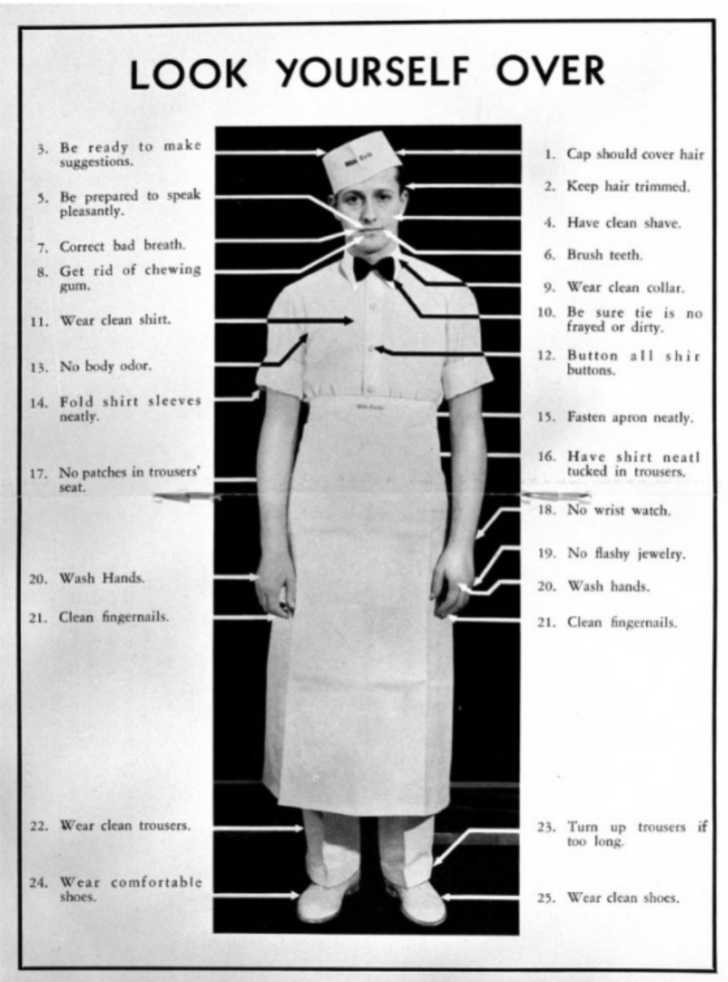
- 1. Cap should cover hair.
- 2. Keep hair trimmed.
- 3. Be ready to make suggestions.
- 4. Have clean shave.
- 5. Be prepared to speak pleasantly.
- 6. Brush teeth.
- 7. Correct bad breath.
- 8. Get rid of chewing gum.
- 9. Wear clean collar.
- 10. Be sure tie is not frayed or dirty.
- 11. Wear clean shirt.
- 12. Button all shirt buttons.
- 13. No body odor.
- 14. Fold shirt sleeves neatly.
- 15. Fasten apron neatly.
- 16. Have shirt neatly tucked in trousers.
- 17. No patches in trousers’ seat.
- 18. No wrist watch.
- 19. No flashy jewelry.
- 20. Wash hands.
- 21. Clean fingernails.
- 22. Wear clean trousers.
- 23. Turn up trousers if too long.
- 24. Wear comfortable shoes.
- 25. Wear clean shoes.
It’s interesting that not only should the male employees be prepared to make suggestions for their customers, something the female employees were not required to do, but they were also instructed to make sure there were no patches in the seat of their pants!
Can you even imagine a fast food chain keeping these strict dress codes today?













